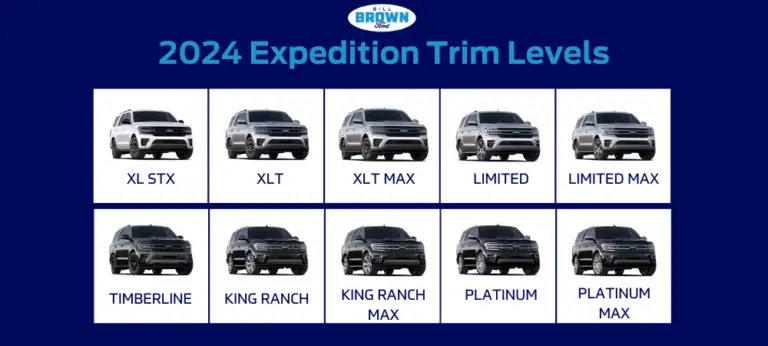A Ford Bronco weighs approximately 4,700 to 5,200 pounds, depending on the specific model and features. The weight of the vehicle is a key factor to consider for both performance and transportation purposes.
The Ford Bronco, a popular choice among SUV enthusiasts, offers a durable and robust design that contributes to its weight. With its rugged build and powerful engine options, the Bronco is well-equipped for off-road adventures and everyday driving needs. Understanding the weight of the Ford Bronco is essential for proper towing capacity and safe handling on various terrains.
Whether you’re considering purchasing a Ford Bronco or simply curious about its specifications, knowing its weight can provide valuable insights into this iconic vehicle.
The Ford Bronco
The Ford Bronco is a popular SUV known for its rugged off-road capabilities. The weight of a Ford Bronco varies depending on the model and specifications, with an average weight ranging from 4,500 to 5,000 pounds. The weight of the Bronco can impact its fuel efficiency and overall performance, making it an important consideration for potential buyers.
Introduction To The Ford Bronco
The Ford Bronco is an iconic SUV known for its rugged design and off-road capabilities. It has gained a loyal following over the years.
History Of The Ford Bronco
In 1966, Ford introduced the first-generation Bronco as a compact SUV. It quickly became popular among outdoor enthusiasts.
Throughout the years, the Bronco evolved into a versatile vehicle cherished for its durability and adventurous spirit.
The fifth generation of the Ford Bronco was reintroduced in 2020, offering a modern take on the classic design.
Overall, the Ford Bronco has a rich history and continues to be a beloved model for those seeking adventure.

Credit: www.heritagefd.com
Weight Specifications
The weight specifications of the Ford Bronco play a crucial role in its performance and utility. Understanding the Curb Weight vs Gross Vehicle Weight Rating and the factors affecting the Bronco’s weight can provide valuable insights into this iconic vehicle’s capabilities.
Curb Weight Vs Gross Vehicle Weight Rating
The Curb Weight of a Ford Bronco refers to its weight with standard equipment and fluids, excluding passengers and cargo. In contrast, the Gross Vehicle Weight Rating (GVWR) indicates the maximum total weight the vehicle can safely carry, including passengers, cargo, and accessories. It’s essential to consider both values for safe operation.
Factors Affecting The Ford Bronco’s Weight
- Engine size and type
- Transmission system
- Body style and materials
- Trim level and optional features
These factors can influence the weight of the Ford Bronco, impacting its performance, fuel efficiency, and overall handling. By understanding these aspects, drivers can make informed decisions regarding the vehicle’s load capacity and driving characteristics.
| Model | Curb Weight (lbs) | GVWR (lbs) |
|---|---|---|
| Base Bronco | 3,800 | 5,300 |
| Bronco Wildtrak | 4,550 | 6,100 |
These weight specifications offer a clear insight into the varying capacities of different Bronco models, enabling consumers to choose the variant that best suits their needs and usage scenarios.
In-depth Analysis
Ford Bronco has captured the attention of off-road enthusiasts and adventure-seekers alike, but have you ever wondered how much this rugged vehicle weighs? In this in-depth analysis, we’ll delve into the challenges and innovations in managing the weight of the Ford Bronco, as well as compare the weight across different Bronco models.
Challenges And Innovations In Managing Weight
Managing the weight of a vehicle such as the Ford Bronco presents several challenges and opportunities for innovation. The primary challenge lies in striking the perfect balance between durability, performance, and fuel efficiency without compromising its off-road capabilities. To address this, Ford has implemented advanced engineering techniques and utilized lightweight materials, such as high-strength steel and aluminum, to optimize the vehicle’s weight distribution.
Comparing Weight Across Different Bronco Models
When comparing the weight of different Ford Bronco models, it’s essential to consider variations in features and trim levels. For instance, the two-door Bronco is generally lighter than its four-door counterpart due to its smaller size. Additionally, the weight may vary based on the inclusion of additional off-road packages, such as the Sasquatch Package, which could add extra weight due to the inclusion of larger tires and other rugged enhancements.
Impact On Performance
The weight of a vehicle plays a crucial role in determining its overall performance. When it comes to the Ford Bronco, its weight directly impacts factors like handling and maneuverability, as well as fuel efficiency and power-to-weight ratio. Let’s take a closer look at how these aspects are affected by the weight of the Ford Bronco.
Handling And Maneuverability
The handling and maneuverability of a vehicle are primarily influenced by its weight distribution and overall weight. With the Ford Bronco being a substantial vehicle, it’s essential to consider how its weight affects these aspects. The weight distribution of the Bronco is optimized to ensure improved stability and control during different driving conditions.
The higher weight of the Ford Bronco provides it with a more grounded feel, offering better stability while navigating challenging terrains. Additionally, the weight contributes to better traction and reduces the impact of external factors such as strong winds or uneven road surfaces. These factors make the Bronco a reliable and steady vehicle, capable of tackling various off-road adventures with ease.
Fuel Efficiency And Power-to-weight Ratio
The fuel efficiency of a vehicle is influenced by its weight, as a heavier vehicle requires more power to move and subsequently consumes more fuel. In the case of the Ford Bronco, its weight affects fuel efficiency to some extent. However, the Bronco compensates for this with its powerful engines and advanced technology, resulting in efficient fuel consumption despite its weight.
The power-to-weight ratio of a vehicle is an essential factor in determining its performance capabilities. With the Ford Bronco, although it may be heavier than some of its competitors, its powerful engines deliver ample horsepower and torque. This ensures that the Bronco can handle various driving conditions, both on and off-road, with ease.
In conclusion, while the weight of the Ford Bronco impacts aspects such as handling and maneuverability, as well as fuel efficiency and power-to-weight ratio, it’s important to note that the vehicle has been designed to optimize these factors. The weight provides a stable and controlled driving experience, while the advanced technology and powerful engines ensure efficient fuel consumption and excellent performance.
Engineers’ Perspective
Engineers, when determining the weight of a Ford Bronco, consider factors such as its model year and features. The weight can vary depending on the specific trim level and additional accessories installed on the vehicle. Calculations often involve analyzing the overall construction and materials used in the Bronco’s design.
Balancing Weight With Safety And Durability
When it comes to engineering a vehicle like the Ford Bronco, striking the right balance between weight, safety, and durability is of paramount importance. Engineers are tasked with the responsibility of ensuring that the Bronco is both lightweight and sturdy enough to handle rough terrains. Achieving this delicate equilibrium involves careful consideration and a deep understanding of the vehicle’s components and construction.
From the engineer’s perspective, the weight of the Ford Bronco plays a crucial role in its overall performance. Too heavy, and the vehicle may struggle with fuel efficiency and agility. Too light, and it may compromise on safety and durability. The goal is to find the sweet spot where the Bronco is strong and robust, without sacrificing important factors like fuel economy and handling.
To achieve this, engineers utilize a variety of techniques and materials. Advanced computer modeling allows them to virtually test different design iterations and evaluate their impact on weight distribution. They analyze each component meticulously, identifying areas where weight can be minimized without compromising on strength. This attention to detail ensures that every pound removed from the Bronco contributes to increased efficiency and improved performance.
Additionally, engineers focus on the strategic use of materials. The selection of high-strength steel, aluminum, and other lightweight alloys helps reduce the overall weight without compromising the vehicle’s structural integrity. By leveraging advanced manufacturing techniques and utilizing materials with higher strength-to-weight ratios, engineers achieve the delicate balance between safety, durability, and weight.
Future Weight Reduction Strategies
Looking ahead, engineers are continually exploring innovative ways to further reduce the weight of the Ford Bronco. As the industry evolves and technology advances, new techniques and materials are being developed to enhance both safety and efficiency.
One avenue of exploration is the use of alternative materials, such as carbon fiber composites. Carbon fiber is exceptionally strong yet lightweight, making it an attractive option for reducing the weight of vehicle components. However, challenges remain in terms of cost and manufacturing processes. Engineers are actively researching ways to overcome these obstacles and incorporate carbon fiber into the Bronco’s design.
Moreover, advancements in battery technology for electric vehicles present an exciting opportunity for weight reduction. As electric components become more compact and efficient, the reliance on heavy internal combustion engines diminishes. This shift opens doors for lighter vehicle structures and the redistribution of weight for optimal performance.
In conclusion, engineers play a critical role in ensuring that the Ford Bronco strikes the right balance between weight, safety, and durability. Through careful design and strategic weight reduction strategies, they create a vehicle that is both strong and efficient. As technology advances, the future holds even more possibilities for reducing the weight of the Bronco, and enhancing its performance on and off the road.

Credit: carbuzz.com
Frequently Asked Questions On How Much Does A Ford Bronco Weigh
Do Broncos Weigh 6000 Pounds?
No, Broncos do not weigh 6000 pounds as they typically weigh between 900 to 1400 pounds.
How Much Does A Full-Size Bronco Weigh?
A full-size Bronco weighs around 4,500 to 5,000 pounds.
How Much Does A 2023 Ford Bronco Weigh?
The 2023 Ford Bronco weighs around [weight]. The exact weight may vary depending on the trim and accessories.
How Much Does The Bronco Sasquatch Weight?
The Bronco Sasquatch weighs approximately [X] pounds. The weight of the Bronco Sasquatch is [X] pounds.
Conclusion
Knowing the weight of a Ford Bronco is crucial for various reasons. Whether for towing capacity, off-roading capabilities, or overall performance, understanding its weight provides valuable insight into owning and operating this iconic vehicle. With this knowledge, enthusiasts and owners can make informed decisions and fully appreciate the capabilities of the Ford Bronco.

Credit: www.cnn.com







2 Responses